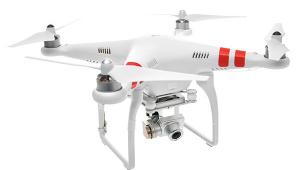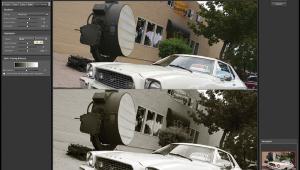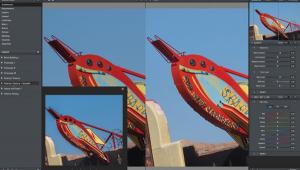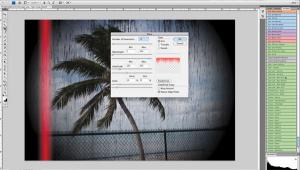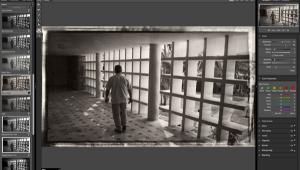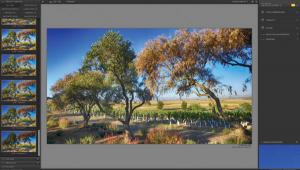Digital Innovations
New Year's Resolutions
A Funny Thing Happened On The Way To New Year's Eve
All Photos © 2004, Joe Farace, All Rights Reserved
"I haven't lost my mind, it's backed up on a disc somewhere."--how I feel on January 2nd.
It wasn't really a holiday present, at least I don't think so,
but my pal Jason gave me a Russian-made Horizon 202 rotating lens panoramic
camera as a gift. I've always been fascinated with widescreen images and
had been reading actor Jeff Bridges' book (Pictures) of panoramic images
made using a Widelux on movie sets. I hadn't shot any film during 2004,
and just a few rolls in 2003, but here I was loading film and taking exposure
readings with a Gossen handheld meter. The Horizon, you see, is an all-mechanical
camera, no batteries included, no batteries needed.
Having a camera with a 120Þ view on a 24x58mm film format and a 28mm focal
length lens changes your way of looking at and framing images. When combined
with what must charitably be called an approximate view seen though the viewfinder
and no focusing capability (I guess that's tough to do with a moving lens)
the experience puts spontaneity and maybe even a little inspiration back into
your photography.
After having the film processed, I hand trim the negatives--haven't
shot slides and don't plan to--and place the strips in the film holders
Epson (www.epson.com) provides with the Perfection 4870 Photo scanner. With
its 48-bit color depth, 3.8
D-max, and 4800dpi, the Perfection 4870 Photo is a practical studio mate for
film shooters. FireWire connectivity makes scans fast and LaserSoft's
(www.silverfast.com) SilverFast scanning software makes it slick. After tweaking
the images in Adobe Photoshop CS suddenly I'm Jeff Bridges, Nash Bridges,
Brooklyn Bridges, or one of those guys.
 |
|
|
Plug-In Of The Month
When it comes to color correction plug-ins, the one I reach for first is PictoColor's
(www.picto.com) iCorrect
Professional, but now there's something new. iCorrect EditLab Pro correction
and color management software is available as a Photoshop compatible plug-in
or stand-alone application for the Mac OS or Windows. Images are automatically
profiled into a specified RGB working color space and color correction parameters
can be saved as ICC (International Color Consortium) profiles or custom settings.
The software merges the color correction and management functionality of PictoColor's
iCorrect Professional and iCorrect EditLab, adding enhanced correction technology
and batch processing tools to create a production tool for photographers and
photo labs who have to color correct large numbers of photos fast, such as wedding,
portrait, school, and sports photos. One photo lab owner reported that he corrected
500 wedding photos per hour with it. Postscript: With the introduction of iCorrect
EditLab Pro, PictoColor is discontinuing iCorrect Entree, iCorrect 4.0, iCorrect
Professional Plug-in, iCorrect EditLab Plug-in, and the iCorrect EditLab Stand-Alone
application.
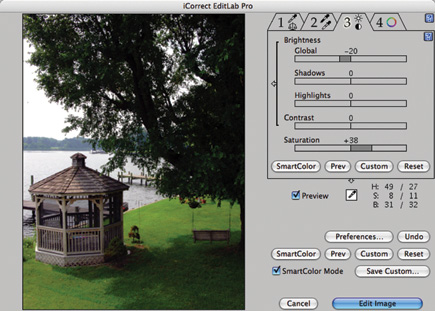 |
|
|
- Log in or register to post comments
